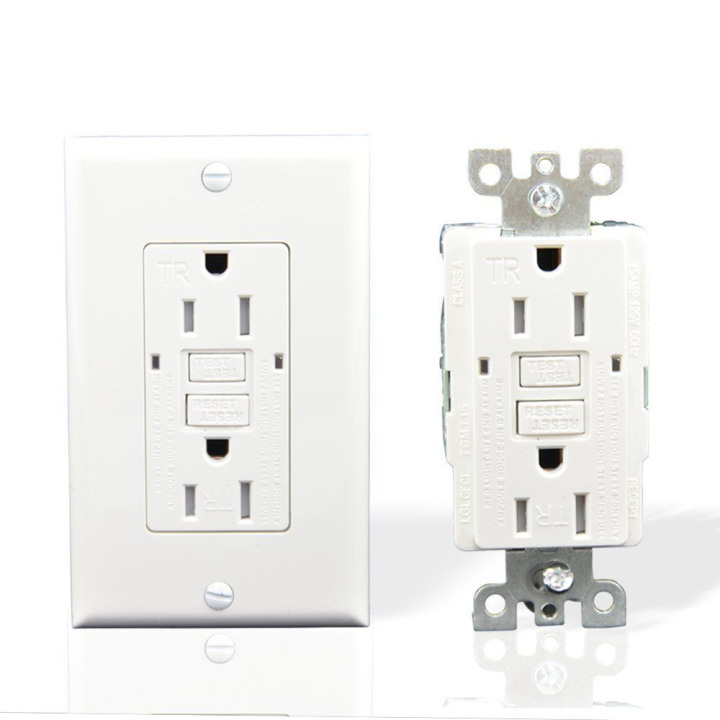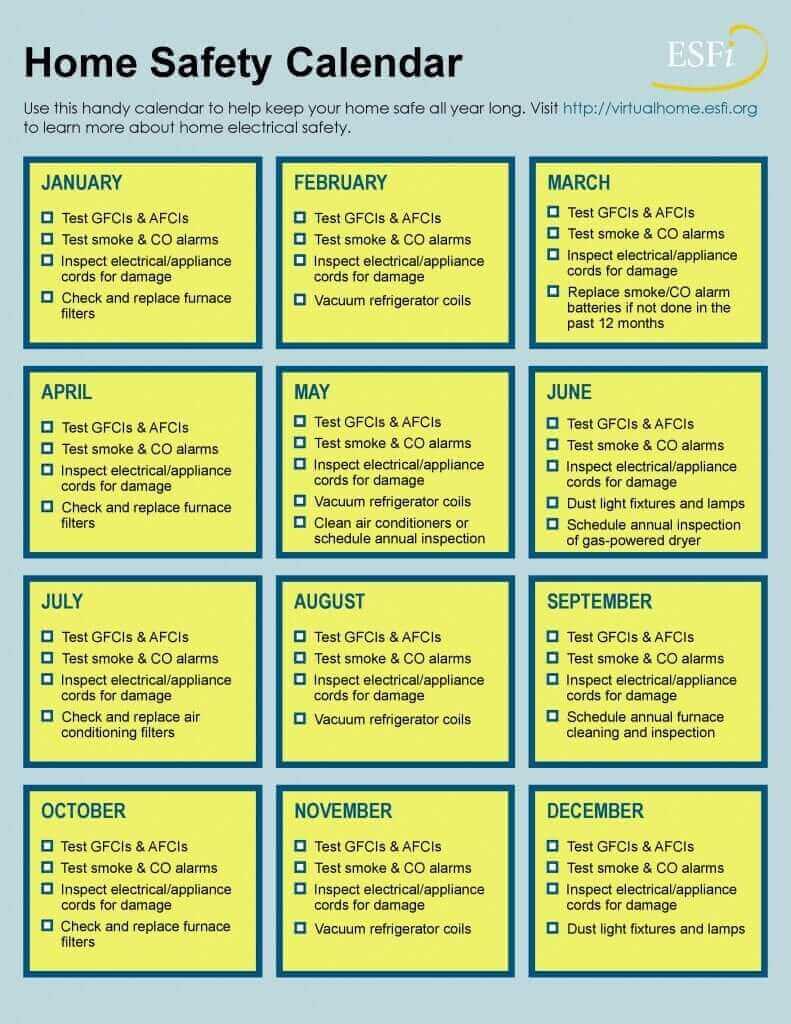Want to save with Paschal? Don’t miss our current offers and specials

Want to save with Paschal? Don’t miss our current offers and specials
Return to Paschal Resource & Education Hub

When buying or selling a home, it is imperative that you conduct a thorough inspection on the electrical systems of the structure. The electrical systems in your home contain hundreds of feet of linear wire, and every connection & receptacle is a possible point of failure or defect. Your electrical system wiring may also be prone to pest or rodent damage in some cases. Every year, electrical outlets alone account for over 5,000 house fires, and over 40 deaths & 100 injuries due to faulty electrical systems. Here at Paschal Air, Plumbing, & Electric, we have developed an electrical inspection checklist that can assist you in the general inspection of your home’s condition, as well as in the buying or selling process. Remember, it is always important to hire a trained electrician to conduct a proper inspection on your home’s electrical systems to prevent injury, fires, or possible death. This checklist should not be substituted for an official home or electrical inspection.
According to the NEC (the National Electrical Code) all modern homes must be equipped with GFCI outlets. Many older homes don’t have ground wires, which isn’t considered safe by today’s standards. A ground fault circuit interrupter (GFCI) outlet is a special type of circuit breaker that can automatically shut off power directly at the outlet when it detects an electrical fault. Damp areas can make you prone to dangerous electric shock but using a GFCI outlet can greatly reduce your risk of injury. GFCI outlets are currently used where a large number of appliances can be expected to be plugged in, like a kitchen. They are equipped with built in breakers that are designed to trip whenever there is a risk of an electrical shock.
The first step to take in inspecting light switches and fixtures is to turn them on and off to see if they work. If they do not, you can use a non-contact voltage tester to determine if the current is getting to the switch, but this is not a necessary part of the inspection.

Inspectors measure outlet and switch heights to see that they are consistent. Typically, outlets (more correctly called receptacles) should be at least 12 inches above the floor and switches should be at least 48 inches above the floor. This, of course, is subject to certain allowances. For a child’s room or for accessibility, heights may be much lower to allow for access.
The most important part of the electrical system inspection is the electrical panel. It’s where the electricity enters the home and is disbursed throughout the rooms.
A distribution board (also known as panelboard, breaker panel, electric panel, DB board or DB box) is a component of an electricity supply system that divides an electrical power feed into subsidiary circuits while providing a protective fuse or circuit breaker for each circuit in a common enclosure.
Inspectors will check to see that all electrical boxes are flush with the wall and that they are large enough to accommodate the number of wire conductors they will contain, along with whatever devices will be contained. The box should be securely fastened so the device and box are secure. Homeowners doing their own work are well-advised to use large, spacious electrical boxes; not only does this ensure you’ll pass inspection, but it makes it easier to complete the wire connections.

Begin your inspection by looking outside the home at the wires coming into the electrical panel. Check that the connection is fastened to the house securely, and note any trees that are interfering with the wiring. Visible wiring should appear to be in good condition and covered with insulation, with no metal showing.
It is important to never touch an electrical panel if you notice anything dangerous. You should exercise extreme caution when attempting to inspect any element of your home’s electrical panel. Serious injury, fires, or death may occur if you do not know what you are doing or looking for. You should never directly touch any part of the electrical system if there is water on the floor. If you feel any heat or tingling when touching any part of the electrical system, stop immediately and do not go any further. At this point you should call a licensed electrician IMMEDIATELY.
To adequately assess the condition of your electrical panel, you must first remove the cover of the electrical panel. Getting the cover off usually involves removing 4-6 blunt-tipped screws.
Fuses are currently illegal in some parts of the country in electrical panels, and must be replaced with breakers. The current NEC states that breakers must be used in place of fuses. If you live in an older home (Pre 1960s-70s) that has not been updated, then chances are your electrical system is still using fuses. A home equipped with fuses is always less safe than one equipped with newer breakers.
Aluminum wiring was common is older homes due to the high cost of copper at the time, but is considered much more unsafe and prone to fires.
The National Electric Code now states that all dwelling shall be required to install a whole home surge protection device on their electrical panel. The NEC recognizes in Article 90.1(A) that the purpose of the Code is the practical safeguarding of persons and property from hazards arising from the use of electricity. Article 230.67 now mandates services supplying dwelling units shall be provided with a surge protective device (SPD) as an integral part of equipment or located immediately adjacent, either Type 1 or Type 2 SPD.
According to the Insurance Information Institute, lightning strikes homes in the United States more than 20 million times per year, causing up to $1 Billion USD in damage to home owners annually. These lightning strikes can cause damage to electronic devices and appliances in your home, and in 2019, over 77,000 claims related to lightning damage were made to US insurance companies. On average, each claim was worth close to $12,000 USD. Lightning can be scary, and expensive, too! In a standard homeowner’s insurance policy, lightning strikes and sudden damage from artificially generated electrical currents are both covered.
While a home may experience several electrical surges a day, most are harmless. However, due to faulty wiring or external factors such as an electrical storm, an extreme electrical surge can damage your property and post a fire risk.
For these reasons, some homeowners install whole house surge protection for sensitive electronics, refrigerators, microwaves, washers/dryers, televisions, and air conditions. Whole house surge protectors can pay for themselves when considering all of the household appliances and electronics it protects from damage.
Electical surges can happen from a number of reasons. Surges can range from 5-10 volts when you turn on a hair dryer, or up to thousands of volts if lightning strikes a transformer. The most common reasons that cause electrical surges in your home are:
Most power surges are internal & can happen dozens of times every single day. Refrigerators and air conditioners are the usual culprit, but even smaller devices can also cause internal electrical surges.
The easiest way to prevent power surges is to set up a first line of defense. While you can’t control electrical surges, you can be proactive in protecting your electronic devices and appliances.
A whole home surge protector is like a power strip (with the surge protection function) for every outlet in your home. Instead of needing to install the power strip on every single outlet for every single device in your house, the whole home surge protector routes any voltage or electrical surge through the device, instead of through your expensive television or refrigerator. Watch this short video to learn more about how a whole home surge protector can protect your electronic appliances and devices.
In addition to having an electrician perform an inspection at least once a year on your home, it is always a good idea to perform a monthly maintenance on your home’s electrical systems.
